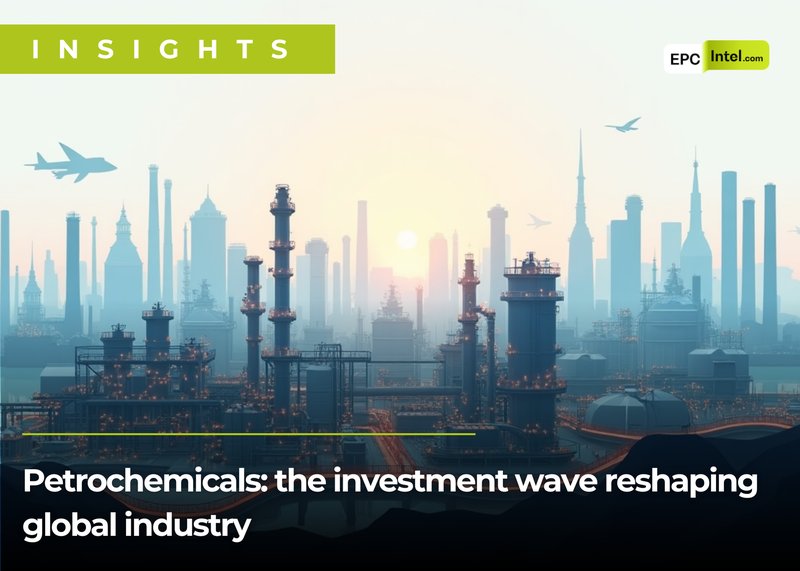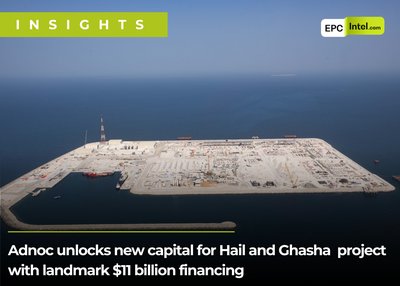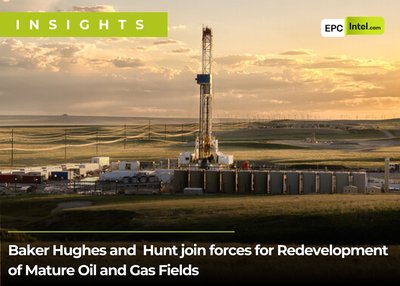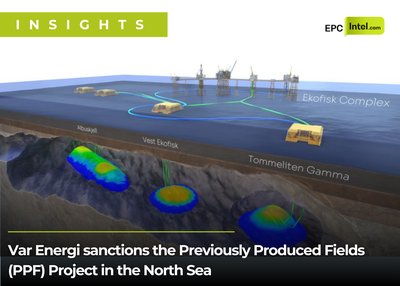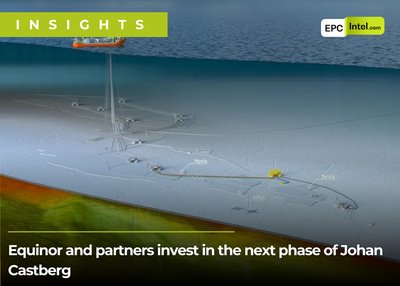For decades the global petrochemical sector has been the backbone of industrial growth, quietly underpinning everything from packaging and textiles to advanced materials and clean energy components. Today the sector is entering a new phase. Based on EPCIntel.com’s synthesis of leading industry forecasts, the global petrochemical market was worth approximately 600 to 650 billion dollars in 2024 and is expected to approach 850 to 900 billion dollars by the mid 2030s, depending on global economic growth, circular economy policies and feedstock cost trajectories.
This is not the old petrochemical story. A decade shaped by cost realignment, decarbonization pressure and regionally concentrated mega investments is about to unfold. And EPC contractors need to position early as this multi cycle build out accelerates.
Why petrochemicals are entering a new phase
Global demand for petrochemical products continues to rise, driven by growth in packaging, construction, mobility, electronics and clean energy components. Even with increased recycling efforts and circularity targets, polymers and chemical intermediates remain structurally hard to replace at scale.
The competitive landscape is reshaping itself as feedstock economics diverge. North America retains a structural cost advantage through ethane rich shale gas. The Middle East is pushing integrated liquids to chemicals and multi product complexes that capture both scale and efficiency. China is moderating its build pace as domestic demand growth cools and overcapacity pressures mount. Europe faces high energy prices and carbon cost burdens that have already triggered closures and mothballing of several assets.
At the same time, technology driven change is accelerating. Electrified cracking, low carbon hydrogen integration, carbon capture on steam crackers and advanced catalyst systems are moving from concept to pilot. Companies positioned to combine scale, advantaged feedstocks and low carbon intensity will define the next competitive frontier.
EPC implications and the capital packages that matter
Petrochemical investments remain among the most complex in the industrial world. Based on EPCIntel.com benchmarking of global projects, a typical world scale integrated complex in the 5 to 8 billion dollar range breaks down roughly into these capital allocations:
• Steam cracker island, 30 to 40 percent. Furnaces, quench systems, compression trains, fractionation and cryogenic separation dominate this scope.
• Downstream derivatives units, 25 to 30 percent. Polyethylene, polypropylene, glycols, aromatics, or specialty chemicals depending on configuration.
• Offsites and utilities, 15 to 20 percent. Power, steam, cooling, flare systems, storage, wastewater and pipelines.
• Electrical, instrumentation and controls, 10 to 12 percent. Substations, DCS, SIS, analyzers and cybersecurity infrastructure.
• Civil works and construction, 8 to 12 percent. Foundations, steel, buildings, piperacks and modular yard execution.
This is a globally diversified supply chain. Technip Energies, Fluor, Samsung E and A, JGC, Tecnimont, McDermott and Sinopec Engineering anchor EPC competition. Furnace and cracking technology vendors include Technip, Linde and KBR. Compressor packages sit with Siemens Energy, Baker Hughes and MAN Energy Solutions. Electrical and control systems draw ABB, Emerson, Honeywell, Schneider Electric and Yokogawa. Civil, tankage and heavy lift execution rely on regional specialists and international players such as Mammoet and Sarens.
Few industries offer EPC scopes this large, this technical or this geographically distributed.
Where the next growth wave sits
Asia and the Middle East dominate the forward pipeline. Southeast Asia and India are preparing multi billion dollar expansions linked to growing domestic demand and strategic import substitution. Indonesia, Vietnam and India are moving toward their largest investment cycles in decades.
The Middle East is entering a new strategic build phase anchored by liquids to chemicals technology, highly integrated complexes and low carbon production initiatives. These projects are designed to lock in competitiveness in a tightening global product landscape.
North America continues to strengthen its position with advantaged NGL feedstocks. New PDH units, polyethylene expansions and specialty chemical projects are progressing through FEED pipelines.
Europe remains challenged but not absent. Select reinvestment is emerging in high value specialty segments, circular polymers, chemical recycling and low carbon retrofits for legacy crackers.
The challenge that still limits momentum
Project financing is growing more complex. Many lenders now evaluate carbon intensity, lifecycle emissions and long term competitiveness before backing multi billion dollar petrochemical assets. High energy prices in Europe, volatile crude to chemicals economics in Asia and growing regulatory scrutiny on plastics create added uncertainty. For many regions, new cracking capacity hinges on feedstock advantage, policy stability and access to low cost capital.
The bottom line
The petrochemical sector is not shrinking. It is evolving into a more concentrated, technologically driven and regionally polarized industry. With global value expected to climb toward 850 to 900 billion dollars by the mid 2030s, the next decade will bring some of the largest and most technically demanding EPC opportunities in the world.
For EPC contractors and suppliers, this is a new multi cycle investment era. The winners will be the companies that position early in furnace technology, derivatives integration, decarbonization retrofits and large scale modular construction capacity.
A new petrochemical cycle is beginning and the opportunities for EPC players are broad, global and accelerating.
